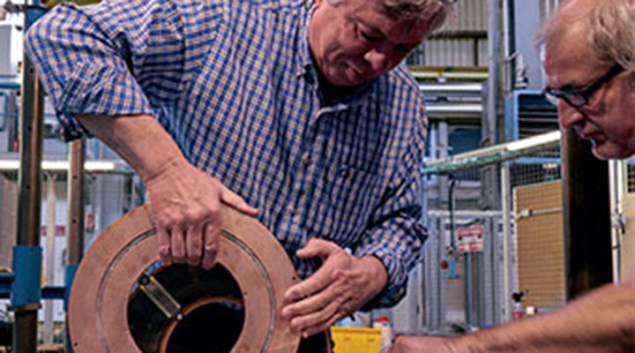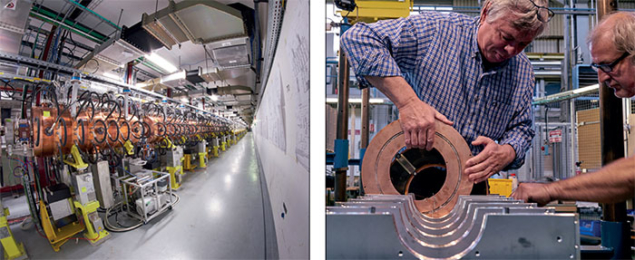

Image credits: M Brice.
CERN has recently implemented two important steps towards the High Luminosity LHC (HL-LHC) – an upgrade that will increase the intensity of the LHC’s collisions significantly from the early 2020s. Preparing CERN’s existing accelerator complex to cope with more intense proton beams presents several challenges, in particular concerning the system that injects protons into the LHC.
At a ceremony on 9 May, a major new linear accelerator, Linac 4, was inaugurated. Replacing Linac 2, which had been in service since 1978, it is CERN’s newest accelerator acquisition since the LHC and is due to feed the accelerator complex with higher-energy particle beams. After an extensive testing period, Linac 4 will be connected to the existing infrastructure during the long technical shutdown in 2019/2020.
To cope with the higher-intensity and higher-energy beams emerging from Linac 4, the Proton Synchrotron Booster (PSB), which is the second accelerator of the LHC injector chain, will be completely overhauled during that same period. At the beginning of June, the first radio-frequency cavity of the new PSB acceleration system was completed, with a further 27 under assembly. The new cavities are based on a composite magnetic material called FINEMET developed by Hitachi Metals, which allows them to operate with a large bandwidth and means that a single cavity can cover all necessary frequency bands. The PSB cavity project was launched in 2012 in collaboration with KEK in Japan, and involved intensive testing at CERN. KEK contributed a substantial fraction of the FINEMET cores and shared its experience with similar technology







